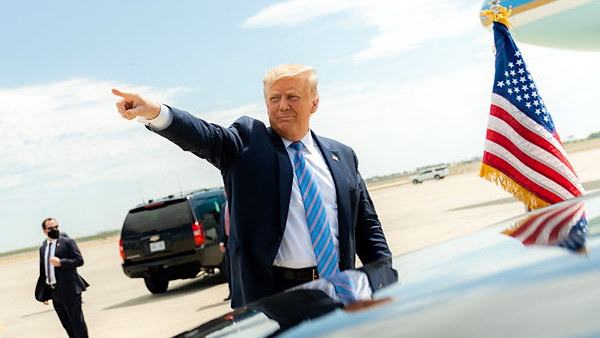
Presidential polls surveying November’s election were the least accurate in 40 years and state polls were the worst in the past 20, a report released Monday shows.
While the report from the American Association for Public Opinion Research outlines how far off the polls were, it was unable to directly attribute what led to the inaccuracy.
“We could rule some things out, but it’s hard to prove beyond a certainty what happened,” said Josh Clinton, a Vanderbilt University professor and chair of the 19-member election task force, Politico reported. “Based on what we know about polling, what we know about politics, we have some good prime suspects as to what may be going on.”
One of the main “prime suspects,” the report notes, is a lack of response to polls in the first place, echoing other pollsters who have tried to diagnose why they were so off. Other reports have attributed polls’ growing inaccuracy to Republicans’ unwillingness to participate in them, exacerbated by former President Donald Trump repeatedly labeling any surveys he did not like as “fake.”
Presidential polls in the final two weeks before the election were off by about 4.5 points, the report said, while state polls were off by just over five. While President Joe Biden’s support was only overestimated by about a point, Trump’s was underestimated by over three.
The task force behind the report observed 2,858 polls, of which 529 were of the national presidential race and 1,572 were of the race at state levels.
Voters’ growing unwillingness to participate makes polls’ inaccuracy far harder to diagnose than in 2016, when the AAPOR’s report found that many polls — and especially those in critical swing states — failed to weigh results by education, and therefore vastly underestimated Trump’s popularity among voters without a college degree.
Voters in 2016 also showed dissatisfaction with both Trump and Democratic nominee Hillary Clinton, and over 6% of the electorate cast their ballot for a third-party candidate. In 2020, however, over 98% of voters chose either Trump or Biden.
The possible lack of participation among Trump’s supporters also led to overestimating Democratic support nationwide.
“There was a systematic error that was found in terms of the overstatement for Democratic support across the board,” Josh Clinton said. “It didn’t matter what type of poll you were doing, whether you’re interviewing by phone or Internet or whatever. And it didn’t matter what type of race, whether President Trump was on the ballot or was not on the ballot.”
Overestimation of Democrats was especially apparent in down-ballot races. Democrats were widely expected to gain seats in the House and potentially flip several state legislatures ahead of the decennial redistricting, but Republicans ultimately gained 12 in the House and held every state legislature.
Experts’ failure to reach a conclusion as to why the polls were so far off also raised concerns over polling’s accuracy in 2022 and 2024.
“How certain are we that we can fix this in the future? Well, it’s unclear,” Josh Clinton said. “We’ll have to wait and see what happens — which isn’t a particularly reassuring position. But I think that’s the honest answer.”


